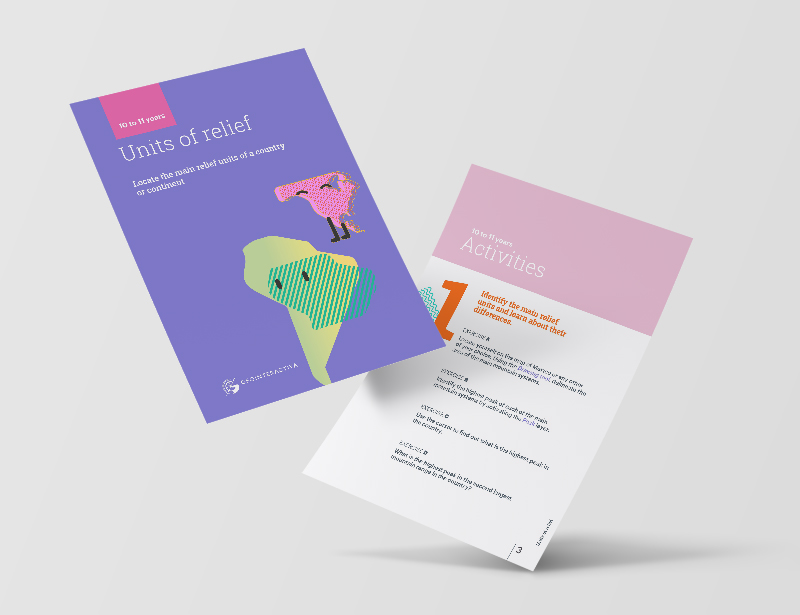
primary (10-11 years)
The units of relief
In this activity you will discover the different shapes (relief units) in which the earth’s surface is presented. In general terms, they can be divided into two types: terrestrial relief units and underwater relief units.
In this downloadable you will find a PDF resource with instructions to energize your classes. On the one hand, we show you which platform tool you will work with and, on the other hand, we propose activities suitable for students aged 10-11.
Do you want your classes to be stimulating? Get started today with Geointeractiva.
We propose to teach geography in a fun way
What will your students learn with this educational activity?
The units of geographic relief
Geography is a subject that allows us to better understand the world we live in, and one of the most relevant topics is the study of relief units. Relief units refer to the different shapes in which the Earth’s surface appears. It is important for primary school children to know the relief units of their country and continent in order to understand how they were formed, how they affect climate and vegetation, and how they influence people’s lives.
What are relief units?
Relief units are the different shapes in which the Earth’s surface appears. In general terms, they can be divided into two types: terrestrial relief units and submarine relief units. Terrestrial relief units are elevations or depressions of the terrain, such as mountains, hills, valleys, plains, plateaus, deserts, and basins. Submarine relief units refer to the shapes found on the ocean floor, such as underwater mountain ranges, oceanic trenches, and coral reefs.
The importance of knowing relief units
Knowing relief units is fundamental to understanding how our planet works. Relief units influence many aspects of life, including climate, vegetation, fauna, and the way people live and work. For example, mountains can influence the formation of rivers, valleys, and plains. Additionally, mountains can have different effects on climate, such as cloud formation and rainfall.
Another example is vegetation. Relief units directly affect the vegetation of an area. Plains tend to have a warmer and more humid climate, which makes them ideal for agriculture, while mountainous areas tend to be colder and drier, which can limit food production.
Relief units can also influence the way people live and work. For example, plains may be ideal for agriculture and livestock farming, while mountains may be more suitable for forestry and mining industries.
How can relief units be taught to students?
There are many ways in which children can learn about the relief units of their country and continent. One way is through direct observation, for example, by visiting different places and observing the different relief units that appear. Children can also explore maps and globes to learn about the different relief units of their country and continent.
Another way to teach about relief units is through practical and playful activities. For example, they can make models of different relief units using materials such as clay, paper mache, or playdough. They can also play interactive online games, such as identification games for mountains, plains, and rivers.
Conclusions
In summary, it is important for primary school children to know the relief units of their country and continent because it allows them to better understand the world around them. By learning about mountains, rivers, plains, and deserts, children can develop observation, analysis, and synthesis skills, as well as greater awareness of the geographical features of their environment. In addition, the study of geography can contribute to fostering a more responsible and sustainable attitude towards the environment.
Teaching geography to students does not have to be boring or tedious. On the contrary, it is possible to do it in an entertaining and creative way, through practical activities, games, videos, and outdoor excursions. The goal should always be to awaken the curiosity of children and encourage their interest in discovering the world around them.
In conclusion, the study of relief units is a fundamental part of the geographic education of primary school students. By teaching them about mountains, rivers, plains, and deserts, we are giving them the necessary tools to better understand their environment, develop observation and analysis skills, and foster a responsible and sustainable attitude towards the environment. So, let’s get to work! Geography can be fun and educational at the same time.